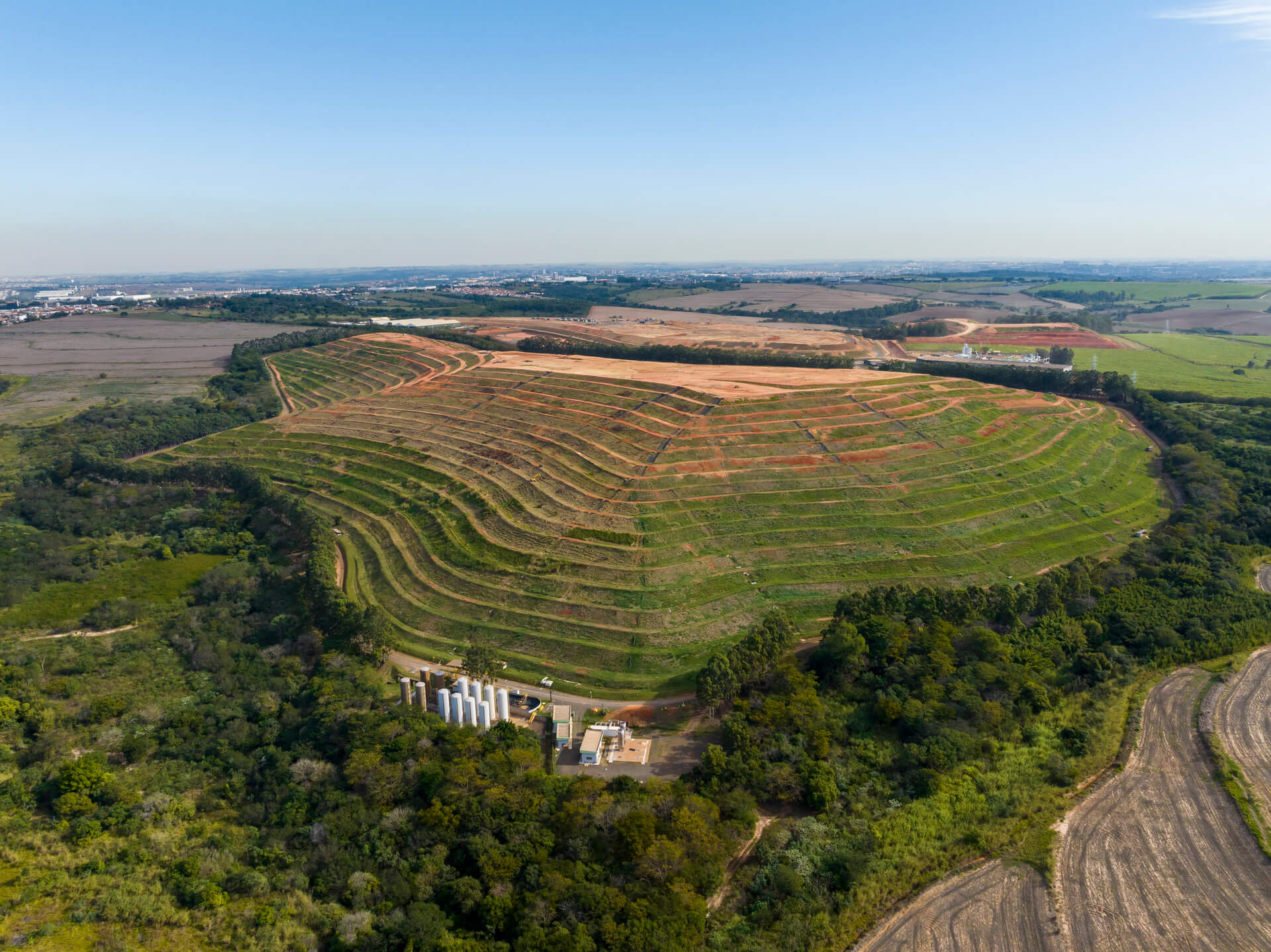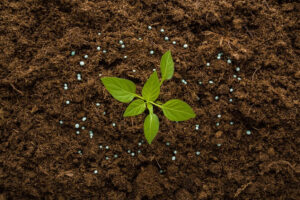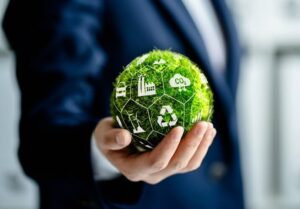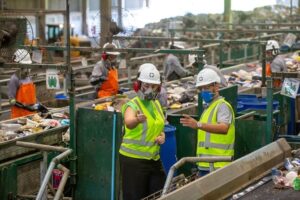
Law No. 12.305 establishes the National Solid Waste Policy (PNRS) since 2010, having as one of the main resolutions elimination of garbage dumps, migrating to more efficient waste treatment models. Among the alternative solutions for waste management, the ecopark, the evolution of the landfill, stands out.
In this article we will show you the environmental impact of solid waste, what are the main differences between the garbage dump, sanitary landfill and the ecopark, and how circular solutions can help in the correct disposal of waste.
THE ENVIRONMENTAL AND SOCIAL IMPACT OF SOLID WASTE
In 2020 alone, during the COVID-19 pandemic, Brazil produced 82.5 million tons of solid urban waste (MSW), which means that, on average, each Brazilian produced 1.07 kg of this waste.
Of this entire amount, 40% of the total waste collected was disposed of in inappropriate areas, such as garbage dumps and controlled landfills.
Some of the socio-environmental impacts associated with the incorrect disposal of solid waste are:
- Soil contamination, making it dangerous for human, animal and plant life around these sites.
- Contamination of water resources due to the infiltration of polluting liquids into the water table.
- Responsible for 3.8% of total GHG (Greenhouse Gas) emissions in 2012 in Brazil, where 64.3% come from the disposal of such waste in garbage dumps, controlled landfills and sanitary landfills. – SEEG (2012)
- High emission of methane gas, which is 25 times more polluting than carbon dioxide (CO2).
- Visual pollution and damage to the country’s GDP.
Despite the impacts of dumps, currently there are still more than 2,600 dumps in operation in Brazil, receiving more than 30 million tons of waste.
Solid waste management, when done properly, as in ecoparks, not only reduces negative impacts, but also transforms and improves waste into raw materials and renewable energy, in addition to developing the circular economy and protecting the environment, as we will see below.
THE EVOLUTION OF WASTE TREATMENT
Waste is generated every day; each person produces almost half a ton of waste every year. In 2020, when considering medium (small establishments) and large generators (industry and agribusiness), the amount exceeded 82.5 million, where only 76.1 million tons were collected, according to ABRELPE (2021).
We can see that dealing with these obstacles in waste management is a huge challenge. But we can also say that there has been a lot of progress in the sector, which is discovering more effective ways of collecting and disposing of waste, seeking to use it as a renewable raw material to create new products and services.
Let’s go deeper into this topic by understanding the difference between garbage dumps, landfills and ecoparks.
GARBAGE DUMPS
The garbage dump is an open area where waste is deposited directly on top of the ground, without any type of insulation and in direct contact with the atmosphere, being the most unreliable type of waste disposal, representing a serious risk to the soil, water, air, people, animals and plants.
This model still represents about 40% of the destination of solid waste in Brazil, evidencing the great need to urgently put the National Solid Waste Policy into practice.
SANITARY LANDFILL
The sanitary landfill is an environmentally appropriate way to treat waste; however, it does not explore the full potential contained in waste.
This is an area which offers soil waterproofing, burying, compaction and control of decomposing materials, which helps to reduce environmental impacts and protect people against animals and diseases that are attracted by the large concentration of garbage.
In this traditional model, the sanitary landfill does not benefit from the options that the waste represents in its entirety, such as the generation of electricity from biogas, as is already taking place at ecoparks.
ECOPARK
The ecopark is an advanced solution for treating waste; it is a safe and innovative alternative that guarantees, in addition to proper disposal, the recovery and processing of waste. At an ecopark, there is enough infrastructure and technology to exploit the full potential of garbage.
Like the process for processing Biogas, for example, which makes it possible to generate renewable electricity as well as biomethane, a fuel having properties similar to VNG (Vehicular Natural Gas).
Ecoparks also have mechanical sorting units (MSUs) for the recovery of recyclable materials, in addition to infrastructure and technology for generating organic compost from waste. We can also highlight the ability to generate carbon credits. We will explain in greater detail below.
HOW DOES AN ECOPARK WORK AND WHAT ARE THE SOLUTIONS OFFERED
An Ecopark is a space formed by a conglomerate of industrial plants employing high technology that allows the treatment and recovery of solid waste. In other words, an Ecopark is a Waste Recovery and Improvement Complex.
Among the solutions and products that can be generated in an Ecopark are:
1. Transformation of waste into renewable energy
The biogas is captured and, after going through several processes, it is used as fuel in the motor generators of the bioenergy plants installed in the ecoparks, which in turn burn the gas, thus generating renewable electricity.
2. Transformation of waste into renewable Natural Gas
From the purification of the biogas captured in the Ecoparks, through processes that involve high technology and innovation, it is possible to generate Biomethane, a renewable fuel that has properties similar to natural gas from a fossil source.
3. Sorting, recovery and proper disposal at a single complex
Waste sorting is carried out using Mechanical Sorting Units (MSUs), where recyclable materials are separated from organic waste and disposed of according to their characteristics, which can guarantee that a 100% recycled product can return to the production chain, stimulating the circular economy and still offering Recycling Credits.
4. Collection, treatment and proper disposal of effluents, protecting the water table
All liquid compost from the grounding of organic waste is collected treated and disposed of, all within the same complex. In this way, leachate, a highly polluting liquid, is converted into reuse water.
5. Reduction of greenhouse gas emissions through the use of methane gas
Present in the decomposition of organic matter, methane gas is 25x more polluting than carbon dioxide. By preventing this gas from being released into the atmosphere, carbon credits are generated in the Ecoparks.
6. Production of organic compost from waste
It is also possible to add value to organic waste through the composting process, obtaining a green fertilizer from a safe and renewable source.
7. Generation of Fuel Derived from Waste
By subjecting waste to the blending process, waste reaches a high level of calorific value and can be used as a substitute in cement kilns; this material is known as RDF (refuse-derived fuel) or HWF (hazardous waste fuel).
To see how an ecopark works in practice, you can watch these two videos by Orizon, in which we show how we transform waste into raw material and renewable energy:
- Tour pelo Ecoparque Paulína – São Paulo [Ecopark Paulína – São Paulo Tour]
- Tour pelo Ecoparque Nova Iguaçu – Rio de Janeiro [Nova Iguaçu – Rio de Janeiro Ecopark Tour]
Finally, it is important to highlight that the New Legal Framework for Basic Sanitation, Law 14016/20, established that, by 2024, municipalities having up to 50,000 inhabitants should definitively put an end to open dumps, showing that the implementation of areas for effective waste treatment, such as Ecoparks, is increasingly urgent.
Subscribe to the Orizon newsletter to keep up with all the news about waste recovery and much more!



